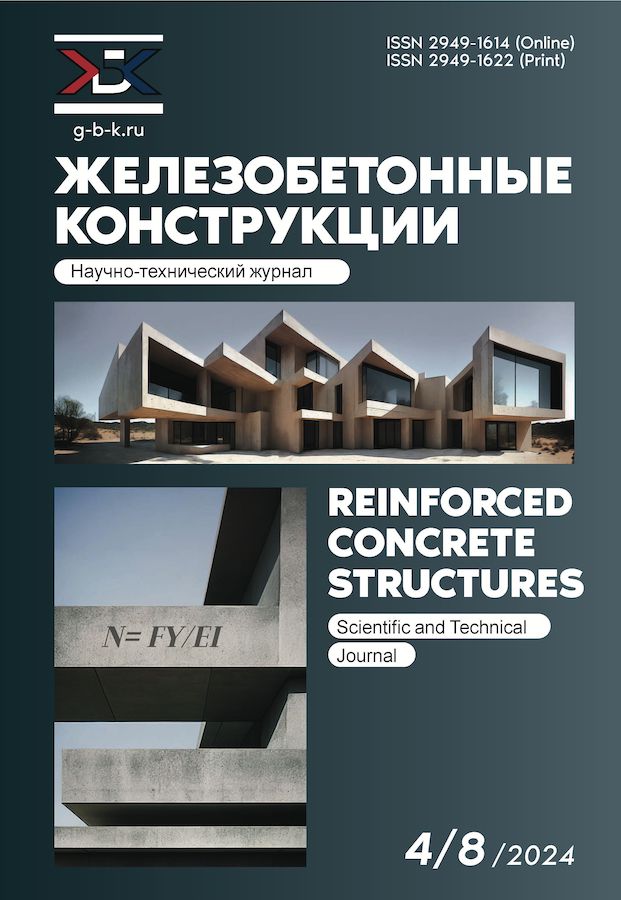Reinforced concrete structures
The journal "Reinforced Concrete Structures" is an international peer-reviewed journal dedicated to creation and improvement of rational types of reinforced concrete structures, methods for their analysis, as well as operation and ensuring of structural safety.
The purpose of the journal "Reinforced Concrete Structures" is to provide an opportunity for scientists and specialists in the field of reinforced concrete to publish and make available to a wide range of readers the results of new scientific research and achievements in this field.
The most important tasks that the journal "Reinforced Concrete Structures" sets for itself are as follows:
- ensuring the high quality of published research articles and reviews through the communication between scientists and specialists in the field of study during reviewing process;
- exchange of views on the pages of the journal on key issues of the theory of concrete and reinforced concrete;
- open access to research articles and reviews in the journal "Reinforced Concrete Structures" for an international audience.
Media registration certificate: ПИ № ФС 77-83679 от 26.07.2022
ISSN (print): 2949-1622, ISSN (online): 2949-1614
Founder: Moscow State University of Civil Engineering (National Research University)
Editor-in-Chief: Tamrazyan Ashot Georgievich, Doctor of Sc., Professor
Frequency / Access: 4 issues per year / Open
Included in: RISC
Current Issue
Vol 8, No 4 (2024)
THEORY OF CONCRETE AND REINFORCED CONCRETE
Stress Redistribution in Statically Indeterminate Corroded Reinforced Concrete Beams
Abstract
 5-13
5-13


Dynamics of a Slab in the Roof of a Buried Structure When the Stiffness of its Supports is Varied
Abstract
 14-23
14-23


Long-Term Exploitation of a Flexible Foundation in Conditions of Nonlinear Rheological Deformation under Force and Non-Force Influences
Abstract
 23-32
23-32


Deformation Criterion for Determining the Distance Between Normal Cracks in Reinforced Concrete Beams under Plane Bending
Abstract
 33-43
33-43


STRUCTURAL DESIGN
Deformation of Early Freezing Concrete in the Assessment Stress-Strain State of Reinforced Concrete Structures
Abstract
 44-53
44-53


Prediction of Strength and Quality Control of Monolithic Concrete Laying in Structures with Permanent Formwork
Abstract
 55-69
55-69








